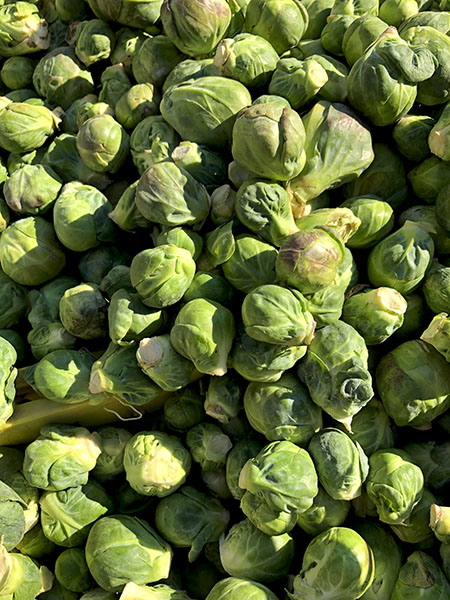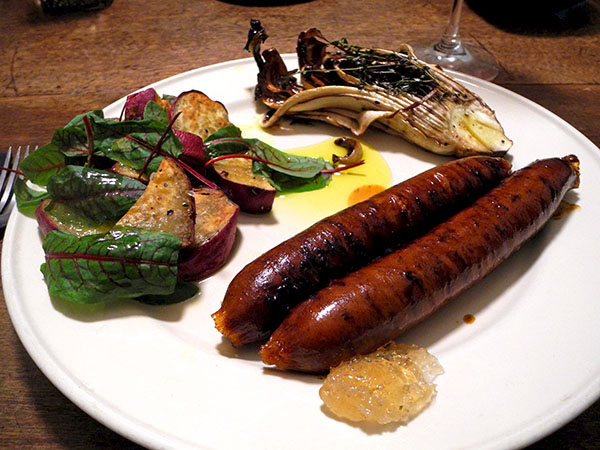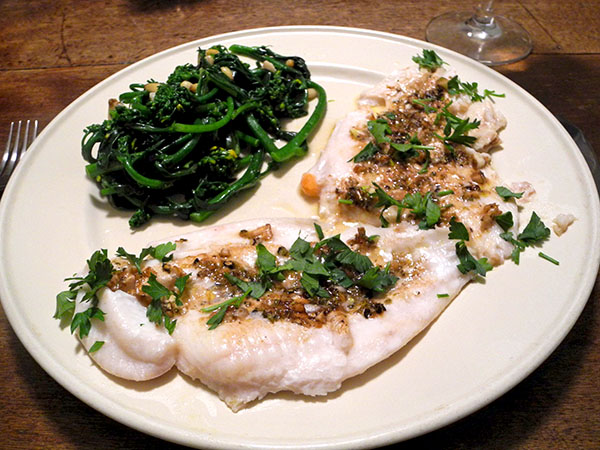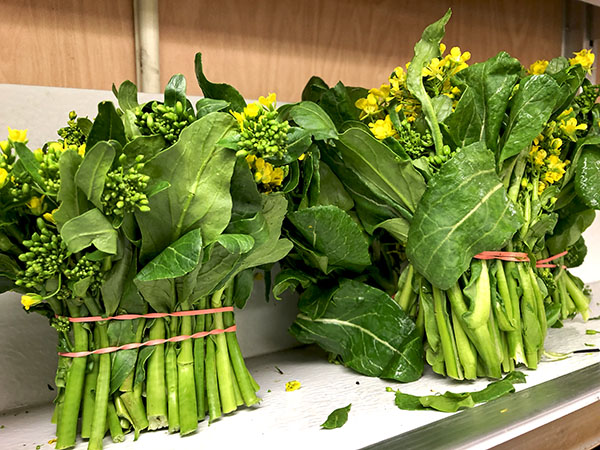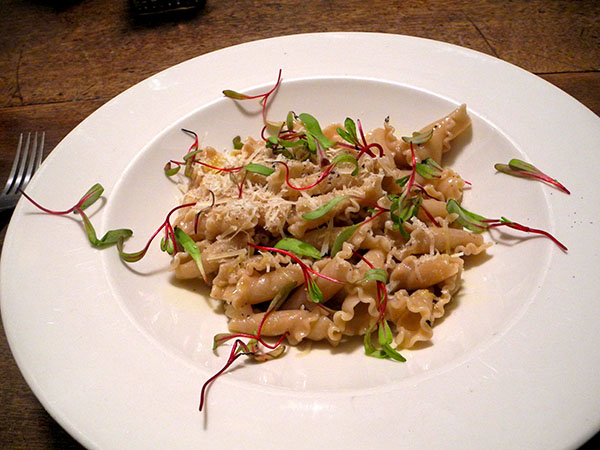
It had been a stressful day for both of us, beginning with a 5:15 am wake-up, but I still wanted to put some kind of homemade dinner on the table. What we got was some delicious comfort food that I quickly improvised 15 or so hours later.
-
- eight ounces of boiled Sfolini Beet fusilli pasta, some of the cooking water reserved (note: this pasta only takes about 5 or 6 minutes to cook, and it goes to al dente with virtually no warning), drained and stirred into a large, heavy, vintage tin-lined copper pan in which about a tablespoon of olive oil had been heated before a handful of chopped young celery stalks from Phillips Farms and one chopped Japanese scallion from Norwich Meadows Farm had been tossed in and sautéed until all of the pieces had softened, after which one section of golden/orange dried habanada pepper, sea salt, and freshly -ground black pepper were added and stirred in, the pasta and vegetables stirred over a moderate flame along with some of the pasta water until the liquid was emulsified, the sauced pasta arranged in 2 low bowls, some olive oil drizzled around the edges, sprinkled with sprinkled with toasted home-made breadcrumbs, and scattered with chopped celery leaves
- the wine was an Italian (Marche) white, Le Salse, Verdicchio di Matelica, 2015, from Flatiron Wines
- the music was Haydn’s Symphony No. 60, ‘Il Distratto’, and No. 91, performed by the Orpheus Chamber Orchestra

